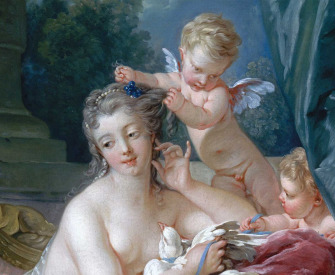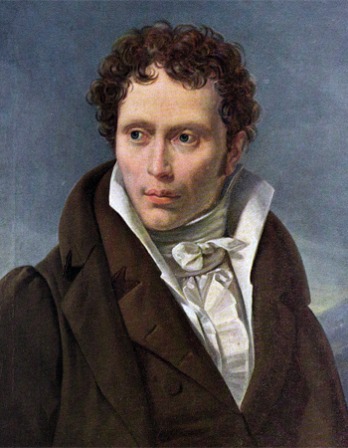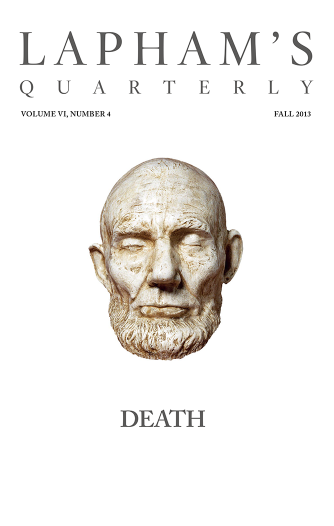Those who know the joys and miseries of celebrities when they have passed the age of forty know how to defend themselves.
—Sarah Bernhardt, 1904Consumer Products
Celebrity culture may seem ahistorical, but its roots reach deeply into the past four hundred years.
By Stephen Marche

Marilyn Monroe, from a publicity shot for The Asphalt Jungle, 1950.
1) The owners of Esther’s Haircutting Studio, the salon in Tarzana, California, where Britney Spears shaved herself bald in 2007, knew immediately that the relics of her breakdown were sacred. The sweepings from their floor, along with a blue lighter and the half can of Red Bull the star had left behind, went on auction a few days later with a reserve of one million dollars. The bidding may have started too low. Photographs of Brad Pitt and Angelina Jolie’s twins—images with a shelf life of less than a week—sold to a transatlantic consortium of People and Hello magazines for fourteen million the next year. The first blush of Knox and Vivienne were worth more than a midsize Lear Jet, more than a goodish penthouse apartment in Dubai, more than 1.4 million malaria nets. It may seem ridiculous, but we value these artifacts so highly for a reason: they belong to the spirits that guide us through the stages of modern life.
2) Celebrities are not appendages of our society anymore; they are the basis of our communal lives. Literature and architecture, art and politics, are at most sidelights—small, ancient alleyways down which fewer and fewer minds wander. Pop culture has long since left the word culture behind to become the primary way we understand the world. Just before she died, the film critic Pauline Kael told a friend, “When we championed trash culture, we had no idea it would become the only culture,” and she was right. The average American household now watches eight hours and twenty-one minutes of television a day. If we want to understand ourselves, if we want to understand the civilization to which we belong, we have to understand celebrities, because the modern world of freedom and loneliness has produced them as the primary communal experience. (I know more about Tom Cruise’s sexual history than I do about my cousins’.) We confront the mysteries and the terrors of life through them.
3) Celebrity culture may seem ahistorical—superficial and of the moment—but its roots reach deeply into the past four hundred years. The dominance of celebrity culture is the long triumphal march of image over substance.
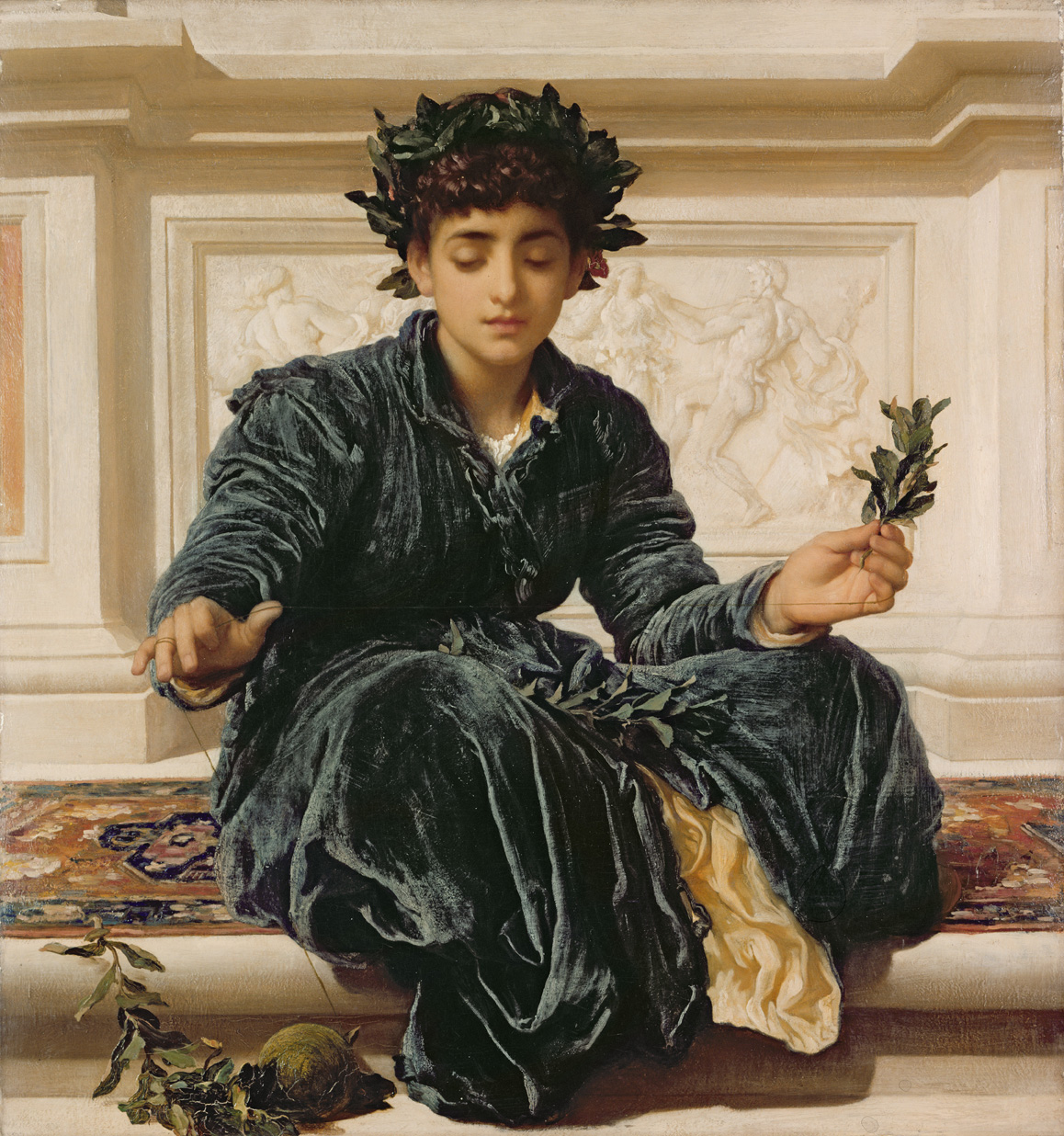
Weaving the Wreath, by Frederic Leighton, 1872. Sudley House, Aigburth, Liverpool, England.
4) The word “celebrity” in its current English sense of “a famous person” dates from 1849, a decade after the invention of photography. Just as voodoo is a danced religion, pop culture is a religion of poses, a spiritual response to image reproduction. The prehistory of celebrity is identical with the genealogy of mass-produced faces. The first celebrities were the kings and emperors who stamped their faces on coins; royalty is still the dominant mode of celebrity—the image of the powerful personality whose charisma is a guarantee of authority. In Canada, Hello is a best-selling magazine, and it focuses heavily on the royal family; the royalty in Holland and Britain are still among the countries’ most popular celebrities.
5) France’s Louis XIV was the first modern-era king to recognize that image mattered more than actual accomplishment. Battlefield triumphs were each depicted immediately on engravings, which could be quickly and cheaply duplicated and disseminated. He built Versailles, which served as the model for all the other courts of Europe, and insisted that Israel Silvestre, designer and engraver to the king, produce high-quality books with images of “all his palaces, royal houses, the most beautiful views and aspects of his gardens, public assemblies, carousels, and outskirts of cities.” Louis was the original king of poses, announcing his status as Sun King in the performance of a ballet when he was fourteen years old, and maintaining power explicitly as a kind of performance art centred around his personality. Celebrity culture was born in the middle of his orgy of conspicuous consumption as he mastered the ability to project his personality through stuff. The king’s preference for champagne made it the beverage, his love of diamonds made them the most precious jewel, fashion began to change with the seasons according to his taste, French replaced Latin as the global language because it was his language.
6) On June 26, 1663, a bootmaker named Nicolas Lestage became the first brand name in history when he presented a stunning gift to the throne for the king’s wedding, a pair of “bottes sans couture,” boots without seams. No one could figure out how he did it. Louis was so entranced with his wondrous footwear (famously more entranced by them than he was by his bride) that he ordered a painting of the bootmaker hung in his portrait gallery with the caption, “He who you see in the portrait is a miracle of his age,” and refused to wear shoes made by anyone else. Lestage’s boot made an economy out of a magical event. (He also was the most successful designer in history at using swag to con a celebrity endorsement.) Even in the beginning, brand names were never just a mark of proven quality but a free-floating connection to a fantasy world—something different from fame. And what happens to handbags eventually happens to people: free-floating fantasy is still the essence of celebrity.
7) The mania for perfume—another luxury mandated in Louis XIV’s court—is maybe the best example of the extreme lightness of celebrity essence. Imagine if the perfumes on the shelf played musical chairs, and the smell of Sean Combs’ I Am King was transferred to Jennifer Lopez’s Glow, while the Guerlain promoted by Hilary Swank shifted to Danielle Steel’s Danielle. Who would notice?
8) The romantic poets were the first genuine celebrities as we know them today—men as famous for their lives as their art. Beaches in Italy are still noted for the fact that Byron rode on them. Much as in the case with Britney Spears, the demand for Byron’s hair was intense—so intense that he often sent strands from his favorite dog Boatswain to his adoring female fans in place of the genuine article.
9) The personality of a celebrity is inherently a contradiction. There cannot be genuine intimacy exactly because he or she offers mass intimacy. To people who knew her, Marlene Dietrich was the living embodiment of a German hausfrau—completely lacking in glamor or even the desire for glamor. Those who saw her only on the screen worshipped her transcendental beauty; she just wanted a quiet cup of tea. Greta Garbo was the first movie star intelligent enough to run away from the cameras, and her flight only increased her celebrity. The basis of our intimacy with celebrity is exactly their retreating when we try to see them. Their very resistance is why we can’t stop looking. “Who are these people really?” is the question that we can’t answer but can’t stop asking. The icon retreats behind the screen. Smoke and mirrors hide the fire and reflection. None of the romantic poets lived “in society”; none were associated with London or New York; they all had to flee either to the Lake District or the Continent. Walt Whitman could stay in the city when he was unknown, writing and self-publishing Leaves of Grass, but by the time he became a true celebrity—and he lived into the era when he actually received the title—he had moved to the country.
10) In the twentieth century, aristocracy by image emerged from aristocracy by talent. The invention of film took the magic of brand-name people and gave it world dominance. Film is celebrity, a something-nothing, a cloudy and vague gloss over reality. The earliest audiences were entranced not by the plots of her films but by Greta Garbo’s face, maybe the purest form of ecstasy the modern world has produced. The experience is both plural and singular, the transmission of an image that spreads everywhere but seems directed at each individual viewer. The illusion of mass intimacy changes celebrities into works of art felt so deeply that they are no longer art—Greta Garbo becomes more interesting than any movie in which her face appears.
11) The rise of more intense, and briefer, celebrity over the past century is a side effect of the movement from silent film to the camera phone. Andy Warhol’s dictum that everyone in the future will have fifteen minutes of fame was probably overstating the duration. Viral videos have given the briefest, most superficial fame to a boy doing light-saber tricks, a man attempting to knock down the Oasis frontman, a baby laughing maniacally for a couple of minutes.
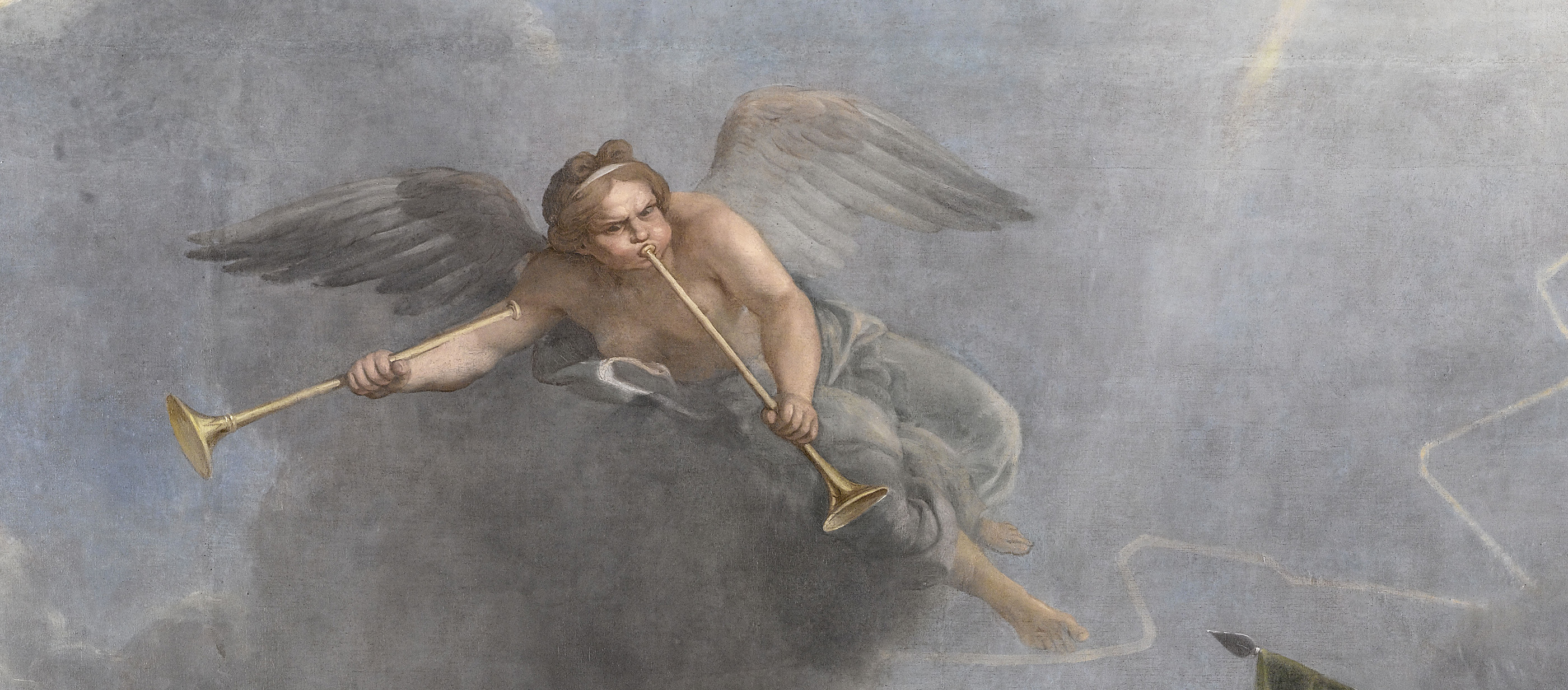
Fame, from Spanish Actions Deflected by the Taking of Ghent (detail), by Charles Le Brun, 1678. Palace of Versailles, Hall of Mirrors, France.
12) Within the maelstrom of image, however, certain celebrity types return to the public consciousness again and again. Gwyneth Paltrow is not just Gwyneth. Without Greta Garbo, there is no Grace Kelly; without Grace Kelly, there is no Gwyneth. The power of this particular trope—the blond princess—is huge; Great Garbo was the most charismatic actress in history. Avenue Princess Grace in Monaco is the most expensive stretch of real estate in the world, over twice the per-square-foot value of an average Fifth Avenue apartment. Each manifestation of the Gwyneth/Grace/Garbo figure wears the skin of the previous manifestation. For women, along with the blond princess, we have the blond whore (Mae West, Tallulah Bankhead, Marilyn Monroe, Madonna), the exotic (Sophia Loren, Penélope Cruz), the independent (Katherine Hepburn, Barbara Streisand, Ellen Burstyn). Among men, the tough guy, the consummate gentleman, the upstanding fellow, the outsider, the shlub, the permanent child, the destroyed adolescent, the man who consumes himself to death, have all been constantly reinvented. As in any other form of polytheism, gods appear and disappear, built to fit time and occasion and place. No matter what social change is under way on the playing field of history, the gods above remain; they hover over the changing world without moving. There has always been a James Dean, there will always be a James Dean.
13) Celebrity culture is religion in disguise. It pretends to be junk while giving us the sustenance that we need. Celebrities live like gods; they act like gods. They dwell in the dark recesses of our souls where we crave the images of gods. In the aisles of the supermarkets they stare down at us like the saints and gargoyles that once crowded the cornices of medieval cathedrals with the iconography of suffering, or like sculptures in Hindu temples that celebrate birth, sex, death, rebirth. The latest American Religious Identification Survey shows that the fastest growing religious choice in the United States is “none,” now larger than every other group except Baptists and Catholics. Pop culture is rushing in to fill that space, an unacknowledged religion of consumerism, guiding the major transitions of life: birth, adolescence, marriage, sin and redemption, death and life after death.
14) The magazine rack matters more than any philosophy; the cineplex matters more than the cathedral. Strange gods reveal themselves in beautiful shapes, appear eternal and untouchable for the brief terms of their on-sale dates, and then vanish as swiftly as they came, generating constantly new and immediate responses to the slightest flutter of need in the public consciousness.
15) In the largest annual Aztec festival, the feast of Toxcatl, a young man, selected by the king, was given complete freedom for a year. He was treated like a god, decorated in white eagle feathers, and given four beautiful wives, but at the ceremony at year’s end, he himself, of his own will, climbed the steps of the temple and willingly suffered his heart to be cut out of his body. Celebrity implies its own destruction. The bigger the celebrity the more glamorous the destruction. The mourners who laid flowers at the gates of Kensington Palace in memory of Princess Diana might well be the same people who kept in business the paparazzi who hounded her to her death. No one knew or cared about her person—they cared about the face on the memorial plate.
16) The rule of images plays to our pre-Colombian pagan heart. If George Washington were to return to New York in 2010, his Christian Enlightenment self would not know how to read the meaning into the photographs posted on the covers of People and Vanity Fair. But Montezuma would understand them perfectly. The worship of celebrity is the religion we have conjured out of the hollowness of our deepest selves.

